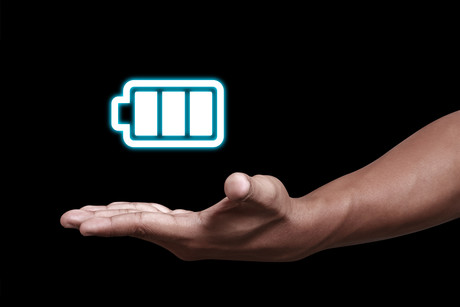Four-electron conversion achieved in lithium-air batteries

Chemists from the University of Waterloo have resolved two of the most challenging issues surrounding lithium-oxygen batteries — and in the process created a working battery with near 100% coulombic efficiency.
The high theoretical-energy density of lithium-oxygen (LiO2) batteries and their relatively light weight have made them the Holy Grail of rechargeable battery systems. But longstanding issues with the battery’s chemistry and stability have kept them a purely academic curiosity.
Two of the more serious issues involve the intermediate of the cell chemistry (superoxide, LiO2) and the peroxide product (Li2O2) reacting with the porous carbon cathode, degrading the cell from within. In addition, the superoxide consumes the organic electrolyte in the process, which greatly limits the cycle life.
Seeking a solution, Waterloo’s Linda Nazar and her colleagues switched the organic electrolyte to a more stable inorganic molten salt and the porous carbon cathode to a bifunctional metal oxide catalyst. By operating the battery at 150°C, they found that the more stable product LiO2 is formed instead of Li2O2 — resulting in a highly reversible Li-oxygen battery with coulombic efficiency approaching 100%. By storing O2 as lithium oxide (Li2O) instead of lithium peroxide (Li2O2), the battery not only maintained excellent charging characteristics, it achieved the maximum four-electron transfer in the system, thereby increasing the theoretical energy storage by 50%.
“By swapping out the electrolyte and the electrode host and raising the temperature, we show the system performs remarkably well,” said Nazar, Canada Research Chair in Solid State Energy Materials and senior author on the study.
Published in the journal Science, the team’s work proves that four-electron conversion for lithium-oxygen electrochemistry is indeed highly reversible. According to Nazar, “There are limitations based on thermodynamics; nevertheless, our work has addressed fundamental issues that people have been trying to resolve for a long time.”
Computational model enhances battery safety
Researchers have developed a new computational model that offers insights into one of the key...
Novel method to extend lifecycle of Li-ion batteries
Researchers have uncovered a hidden surface degradation mechanism in the cathodes of lithium-ion...
Sensor could help prevent Li-ion battery fires
Researchers have developed new technology to detect dangerous gas leaks in lithium-ion batteries,...





